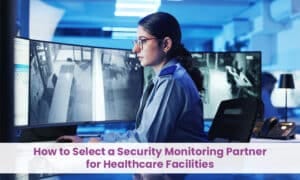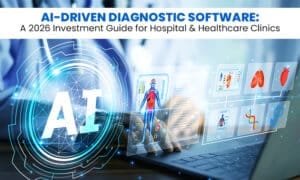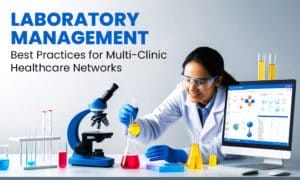
Hospitals across the world face growing cybersecurity threats every year. Ransomware attacks, phishing schemes, insider threats, and malicious data breaches have forced healthcare leaders to rethink how they handle technology. A HIMS now acts as the central nervous system of modern healthcare organisations. It manages patient records, billing, diagnostics, clinical workflows, and even supply chains. While this digital backbone drives efficiency, it also creates an attractive target for cybercriminals.
Healthcare leaders cannot ignore the importance of Healthcare IT security. Regulations like NABH, HIPAA, ISO, and GDPR enforce strict data protection guidelines. At the same time, patients demand transparency, confidentiality, and trust. Hospitals that fail to adopt the best security features in HIMS not only risk financial penalties but also damage their reputation and lose patient confidence.
Role-Based Access Control (RBAC): Protecting Data Through Permission Layers
Why RBAC is Necessary for Hospitals
Every hospital handles thousands of patient records daily. If every staff member has unrestricted access, sensitive information becomes vulnerable. Role-Based Access Control (RBAC) creates permission layers. It ensures only authorised individuals view, edit, or share specific information. For instance, doctors access medical histories, billing staff access payment details, and lab technicians access diagnostic results.
Advantages for Hospitals and Clinics
Hospitals implementing RBAC within their Hospital Management System gain better control over sensitive workflows. This feature reduces the chances of insider data misuse. Leaders achieve higher compliance with HIMS compliance features mandated by NABH and HIPAA. RBAC also helps administrators enforce accountability by linking every data access to a user identity.
Benefits for Doctors, Nurses, and Staff
Doctors and nurses experience less digital clutter because they only access data relevant to their roles. Staff members follow clearer workflows, which reduces errors and improves productivity. Accountability grows naturally since the system records every access attempt.
Patient Impact
Patients gain confidence when they know hospitals safeguard their information. Trust grows stronger because unauthorised individuals cannot view or manipulate personal medical records. RBAC creates transparency, which patients increasingly value in a digital-first healthcare world.

Data Encryption In Hospital Management System: Shielding Patient Information from Cyber Attacks
Why Encryption Matters in Hospital Software
Data breaches cost the healthcare sector billions annually. Criminals often target hospitals because health records hold sensitive personal and financial information. Data encryption ensures that even if attackers intercept the information, they cannot read or exploit it. Encryption acts like a digital vault, locking patient data with advanced codes that only authorised systems can unlock.
Advantages for Hospitals
Hospitals adopting advanced encryption secure themselves from ransomware, data theft, and compliance penalties. Modern Healthcare IT security regulations, including HIPAA and GDPR, specifically mandate encryption. Hospitals using encrypted HIMS achieve stronger protection and demonstrate responsibility toward patient safety.
Benefits for Healthcare Workers
Doctors and nurses collaborate more confidently when sharing digital reports or images across departments. Encryption ensures their communication remains confidential. Hospital staff avoid the fear of accidental data leaks, allowing them to focus on clinical care.
Benefits for Patients
Patients expect confidentiality. Encrypted communication and record storage assure them that their health information remains private. This directly improves satisfaction and strengthens the hospital’s reputation as a safe provider of digital healthcare.
Audit Trails and Real-Time Monitoring: Tracking Every Action for Accountability
Why Audit Trails Are Critical
Hospitals cannot manage what they cannot measure. Audit trails and real-time monitoring record every digital action inside a HIMS. From login attempts to data edits and system updates, every event leaves a footprint. Leaders use these logs to investigate unusual activity, identify threats early, and ensure compliance with regulators.
Hospital-Level Benefits
Hospitals gain a transparent view of how staff interact with data. This strengthens accountability and makes internal audits smoother. In case of compliance checks or legal disputes, leaders produce clear evidence using audit trails. Real-time monitoring also reduces downtime by detecting anomalies before they escalate into crises.
Advantages for Healthcare Workers
Audit trails protect staff by recording their legitimate actions. If a data entry error occurs, the system tracks the responsible step, helping managers resolve issues without unnecessary blame. Ethical work culture improves when everyone knows their actions remain traceable.
Benefits for Patients
Patients appreciate hospitals that monitor system activity continuously. It assures them that data handling remains ethical, transparent, and traceable. Audit trails strengthen trust because they prove the hospital takes patient safety seriously.
Multi-Factor Authentication (MFA): Strengthening Logins Beyond Passwords
Why MFA is Essential in HIMS
Passwords remain the weakest link in digital security. Staff members often reuse passwords or write them down, which exposes hospitals to serious risks. Multi-Factor Authentication (MFA) adds layers of identity verification such as one-time passwords, biometric scans, or smart cards. It makes unauthorised entry nearly impossible.
Advantages for Hospitals
MFA significantly reduces data breaches caused by stolen or guessed credentials. For hospitals managing remote consultations or administrative staff working offsite, MFA ensures secure logins. It also fulfils regulatory expectations for compliance-ready hospital management system security.
Benefits for Healthcare Staff
Doctors and nurses logging in from home or during telemedicine sessions gain peace of mind with MFA. Their accounts remain safe even if someone learns their passwords. It builds confidence in using digital platforms actively without fear.
Benefits for Patients
Patients increasingly access hospital portals for appointments, reports, and teleconsultations. MFA ensures these platforms remain safe from intruders. Patients experience secure interactions, which builds long-term trust.
Also read- Smart Hospital Management System: Security Checklist Guide – Ezovion
Cloud Security and Data Backup: Safeguarding Against Downtime and Loss
Why Cloud Security is a Game-Changer
Cloud-based HIMS dominate today’s market because they scale efficiently and reduce IT infrastructure costs. However, reliance on cloud environments requires advanced Healthcare IT security. Cyberattacks, power failures, or disasters cannot disrupt hospitals that deploy secure cloud systems with strong backup strategies.
Advantages for Hospitals
Hospitals implementing cloud security and automatic backups ensure continuity. Even during cyber incidents or technical failures, operations remain smooth. Leaders benefit from rapid disaster recovery, which minimises financial and reputational losses. Cloud-based systems also support multi-location hospitals with centralised, secure access.
Benefits for Doctors, Nurses, and Staff
Staff access patient records securely from any location. This flexibility empowers doctors to consult across branches and nurses to collaborate across units. Reduced downtime keeps workflows efficient, which improves productivity and reduces frustration.
Benefits for Patients
Patients never experience service disruption because their medical history, prescriptions, and diagnostic reports remain safe in the cloud. This uninterrupted continuity of care enhances satisfaction and positions hospitals as reliable providers of healthcare.

The Bigger Picture: Why Security Features in Hospital Management System Define Future-Ready Hospitals
Security Beyond Compliance: A Strategic Imperative
Security in a Hospital Management System goes far beyond meeting legal or compliance requirements. While NABH, HIPAA, ISO, and GDPR set the baseline, healthcare leaders must view security as a strategic enabler of long-term growth. A hospital that prioritises HIMS security features positions itself as a trusted institution capable of delivering care safely in a digital-first era. Future-readiness means adopting systems that not only meet today’s standards but can also adapt to tomorrow’s challenges.
Rising Expectations from Stakeholders
Modern hospitals face constant scrutiny from patients, regulators, and business partners. Patients expect confidentiality and transparency when sharing sensitive health information. Regulators demand proof of HIMS compliance features before granting accreditations. Insurance companies and technology partners prefer collaborating with hospitals that demonstrate strong Healthcare IT security. Meeting these diverse expectations requires an HIMS built with advanced security features at its core.
How Hospitals Benefit Globally
Hospitals that implement strong HIMS security features achieve multiple benefits at a global level:
• Seamless Compliance: Compliance with NABH, ISO, HIPAA, and GDPR becomes easier and more transparent, reducing audit stress.
• Reduced Risks: Hospitals lower exposure to lawsuits, regulatory fines, and reputational crises by safeguarding patient data.
• Trust and Reputation: Secure systems demonstrate responsibility, building patient confidence and strengthening global partnerships.
Hospital Management System – Empowering Healthcare Professionals
Doctors, nurses, and support staff perform better when they work in secure digital environments. A compliance-ready HIMS security model ensures staff members access only the data they need, which reduces confusion and supports accountability. Secure systems also encourage ethical practices because every action leaves a traceable digital footprint. By removing uncertainty, staff gain more time to focus on patient care instead of worrying about data risks.
Delivering Direct Benefits to Patients
Patients today want more than treatment—they want safe, transparent, and uninterrupted digital healthcare. Patient data protection with hospital information systems reassures them that their personal details remain private. Secure HIMS platforms also enable uninterrupted services, even during system failures or cyberattacks. Patients receive care with confidence, knowing the hospital protects their data while maintaining operational continuity.
Future-Proofing Against Cyber Risks
Cyber threats in healthcare evolve constantly. From ransomware to insider threats, risks can disrupt hospital operations and erode trust. Hospitals that embrace advanced HIMS compliance features stay ahead of these challenges. They prepare not just for existing threats but also for those yet to come. Future-ready hospitals prove themselves as leaders in digital healthcare innovation, resilient enough to adapt during crises while continuing to deliver safe, patient-centred care.
Building Smarter, Safer, and More Compliant Hospitals
The digital future of healthcare relies on strong Healthcare IT security as the backbone of every modern Hospital Management System. Hospitals that adopt essential HIMS security features—including Role-Based Access Control, Data Encryption, Audit Trails with Real-Time Monitoring, Multi-Factor Authentication, and Cloud Security with Backup—create a secure, compliant, and efficient environment. These safeguards protect sensitive data, strengthen compliance, and streamline workflows for doctors, nurses, and staff while building greater patient trust.
For healthcare leaders, investing in compliance-ready hospital management system security is no longer optional—it is a strategic necessity. A smart HIMS not only protects organisations from cyber threats but also ensures ethical healthcare delivery, sustainable growth, and stronger global reputations. Ultimately, secure digital systems create safer hospitals, empower healthcare professionals, and guarantee better outcomes for patients worldwide.





